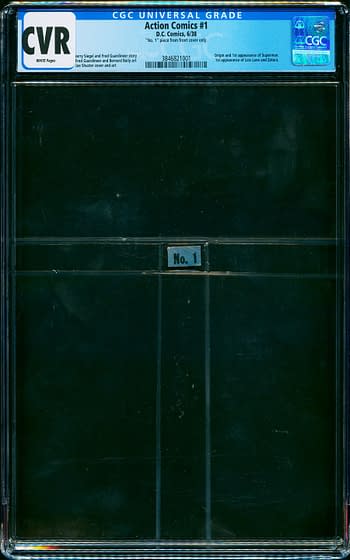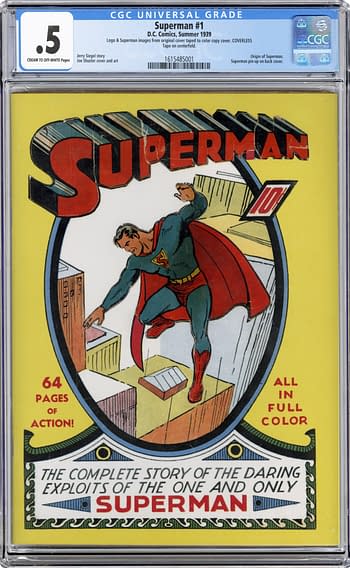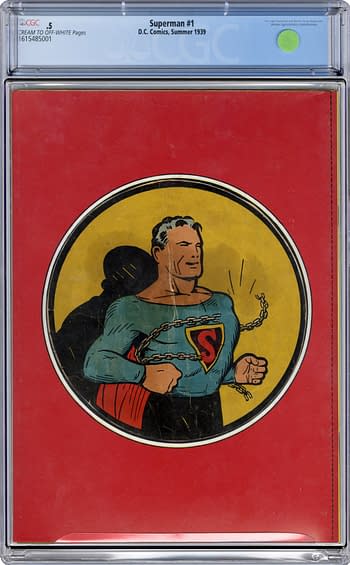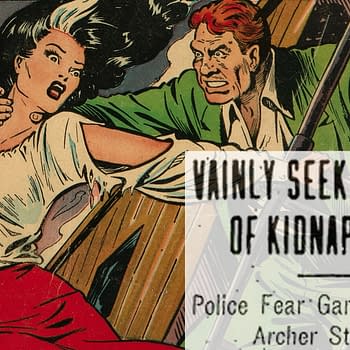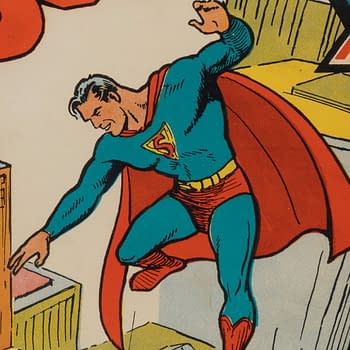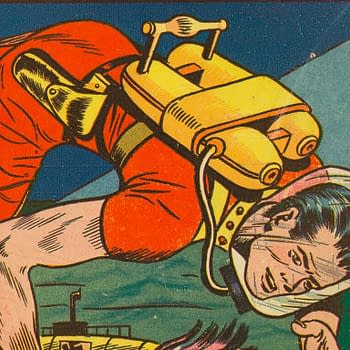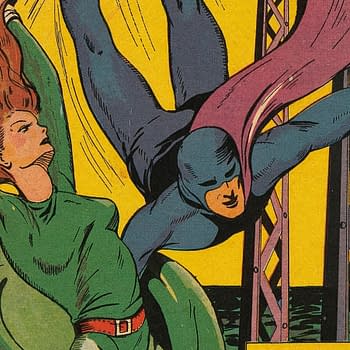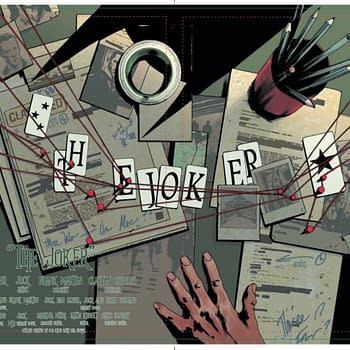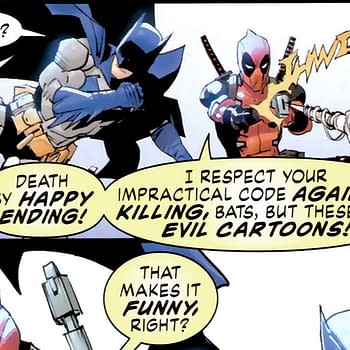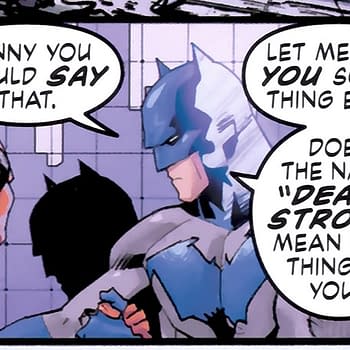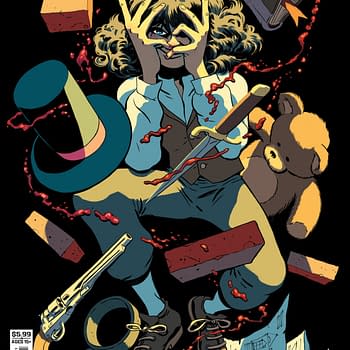Posted in: ComicConnect Sponsored, Comics, Vintage Paper | Tagged: dc comics, superman
A Very Unusual Superman #1 CGC .5 Copy, Up for Auction
One of the most popular comic book keys, any copy of Superman #1 is desirable, including this unusual CGC .5 example.
Article Summary
- Superman #1 is a prized Golden Age key featuring art by Joe Shuster and story by Jerry Siegel.
- Collecting culture prizes even low-grade or incomplete copies due to extreme rarity and demand.
- The issue's new material named Krypton and introduced the Kents, while also reprinting the Superman stories from Action Comics #1-4
- High-grade Superman #1 copies are scarce due to historical factors.
The idea that some comic book keys can go for eye-popping prices has been a matter of discussion in fandom for a very long time. In an issue of the fanzine Rocket's Blast Comicollector #54 (1967), editor G.B. Love responded to a reader comment about high prices that advertisers listed on their comics for sale, by noting a controversial 1962 sale of a copy of Superman #1 by Jerry Siegel and Joe Shuster for $20. "If someone wants to put up a copy of FANTASTIC FOUR #1 for $20, that's his business. I don't think it's worth that much, but what does that prove? Five years ago, Paul Seydor sold a copy of SUPERMAN #1 to a fan for $20. Everyone in fandom, including myself, thought this fan was out of his mind to pay so much. Today, if you can buy the same comic for $50, you've got a real bargain. No, I am not saying FF #1 will necessarily be worth $50 someday, but the point is a comic (or anything else) will set at a high as price as people will pay for it."
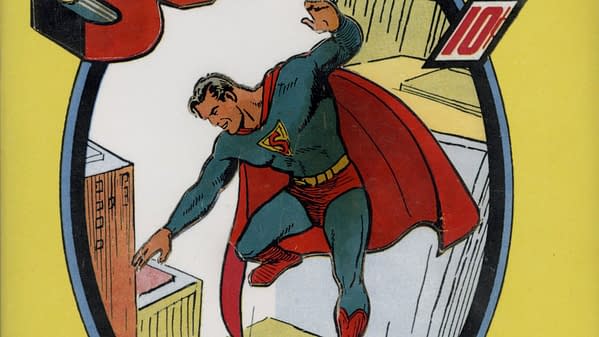
Of course, prices have progressed far beyond any 1962 fan's imagination since then, to the point that even parts of major comic book keys have become sought after. Single pages from keys like Action Comics #1, Superman #1, Detective Comics #27, and others have become pricey. Single pages from Action Comics #1 have sold for as much as $25,000. Page seven from Superman #1, which includes the iconic "lifting a car over his head" scene, a page which has sold frequently in recent years, went for $4967 in May 2025. And it's gone even farther than that. In 2020, brittle flakes from a few pages of Action Comics #1 sold for $410. In a noteworthy case from 2022, just the "No. 1" issue number from the cover of Action Comics #1 sold for $7,101 at auction. At that time, CGC told us that this was the smallest comic book item ever certified by the company. Another somewhat similar example of "pieces of covers" is the Green Lantern cover elements from All-American Comics #16, the first appearance of the character, which has also been CGC certified as authentic in the photo shown below.
- Cover elements from All American Comics #16 (DC Comics, 1940)
- "No. 1" from Action Comics #1 (DC Comics, 1938)
It is also not uncommon to create what the collecting hobby calls "Frankenstein copies," by combining a comic with a missing cover or centerfold with parts from a different copy, or even with color copies of the missing parts. An example of that which combines some of the other elements that we've discussed here is up for auction right now in this Superman #1 CGC .5 copy at Comic Connect. In this case, as the CGC label notes, the logo and main Superman images from the front and back covers of an original Superman #1 cover have been taped onto a color copy of the cover, and that cover has been combined with a coverless copy of the comic book. The result has been slabbed as CGC .5 with cream to off-white page quality by CGC. Of course, not all CGC .5 copies are created equal, as there's a wide range of elements possible here that can have an impact on a comic book's appeal to collectors, but there are a number of relatively recent data points by way of comparison. In 2021, this same copy sold for $55,000 at Comic Connect. Copies with an original front cover intact but no back cover have gone for prices ranging from $66,000 to $96,000 (and beyond) in recent years, depending on the condition of the front cover.
Overall price trends aside, another factor driving lower-grade Superman #1 pricing is the relative lack of availability of copies above mid-grade. On the CGC census, there are only nine entries for Superman #1 above CGC 5.0, compared to 13 entries for Action Comics #1 in the same grade range. The relative lack of copies of Superman #1 in higher grades is an interesting historical mystery. Superman #1 had a total print run of 900,000 copies through three printings, while Action Comics #1 had a mere 202,000 copy print run, of which only 130,000 copies sold through at the newsstand. However, it is extremely likely that a large portion of the copies of Superman #1 were distributed in New York over the course of that summer — perhaps even the entirety of the initial 500,000 copy print run, as DC Comics also produced a comic book for the New York World's Fair that year, and was likely able to take advantage of the excitement and tourism surrounding the fair to sell Superman as well. Further, there are few copies of verifiable provenance which have surfaced west of the Mississippi. One theory on why that situation would result in fewer high-grade copies is that print runs that were concentrated in major metro areas very likely had a far higher rate of destruction than comics with a more standard distribution. People are more likely to live in apartments, move, change houses after fewer generations, and generally have less space — far fewer of the fabled grandad's attic or basement finds in that scenario, and those that did survive were probably moved around a lot more, resulting in more general wear and tear.
Interestingly, it appears CGC started noting Superman #1 first prints in grader's notes sometime in 2023. The issue has a back-page ad for Action Comics #14, and in first print copies, the ad notes the release date as "On Sale June 2," while second and third prints say "Now On Sale." Up to now, there has been little or no detectable pricing difference between first print and later print copies, but information about the printings has only relatively recently become more widely known in the collector community.
Despite its place in history as establishing the solo title for DC's most important character, some collectors have been tempted to dismiss the importance of this comic as merely a "reprint book", but that overlooks some crucial factors. Notably, there are seven additional pages done by Siegel and Shuster at the direction of M.C. Gaines. These pages include an expanded two-page origin section, a four-page story showing Clark Kent becoming a reporter, which was added to the front of the story from Action Comics #1, and a 'Scientific Explanation' page explaining Superman's powers. The new two-page origin names the exploding planet as Krypton for the first time, as well as introducing "an elderly couple, the Kents." Those are all key additions to the Superman mythos. On March 27, 1939, Gaines wrote, "We have decided that for the first six pages of the Superman book we would like you to take the first page of 'Superman' which appears in Action Comics #1, and by elaborating on this one page, using different ideas than those contained on this page, work up two introductory pages." Also adding, "On these two pages, you will of course leave out the scientific explanation of Clark Kent's amazing strength, as we want a separate page on that item to use further back in the book with the heading as follows: 'Scientific Explanation of Superman's Amazing Strength', in which you will incorporate five or six various explanations, which we discussed while you were here in New York several days ago." Gaines additionally requested "four pages of a thrilling episode which results in Superman becoming a reporter."
The iconic cover of Superman #1 is a reuse of Shuster's art from the title page of Action Comics #10, which hit newsstands a few weeks prior to that in late January, with a border believed to be by Leo O'Melia added to complete the new cover image. And it had already become clear that Siegel and Shuster had started a phenomenon with this character, and that competition from other publishers was coming. At the time he was writing the March 27, 1939 letter, Gaines was likely preparing for the testimony he would give just days later in the DC v Bruns trial regarding DC's lawsuit against Fox's Wonder Man. He told Siegel and Shuster to have the new material done in about a week, noting that "we want to go to press with this Superman book as soon as possible, to get it on the newsstands not later than May 15th to offset any competition which we now have or may get in the next month or so…" Gaines was correct on that score, as the field would become increasingly competitive in the months that followed. Even so, the Superman title was not originally conceived as a series — or they were hedging their bets, at least. When this issue was released around May 18, it was copyrighted as a pamphlet, not a periodical, and without any issue number indications. Issue #2 would hit newsstands five months later, and soon after, the title was well on its way to becoming one of the most important series in American comic book history.
- Superman #1 (DC Comics, 1939)
- Superman #1 (DC Comics, 1939)




